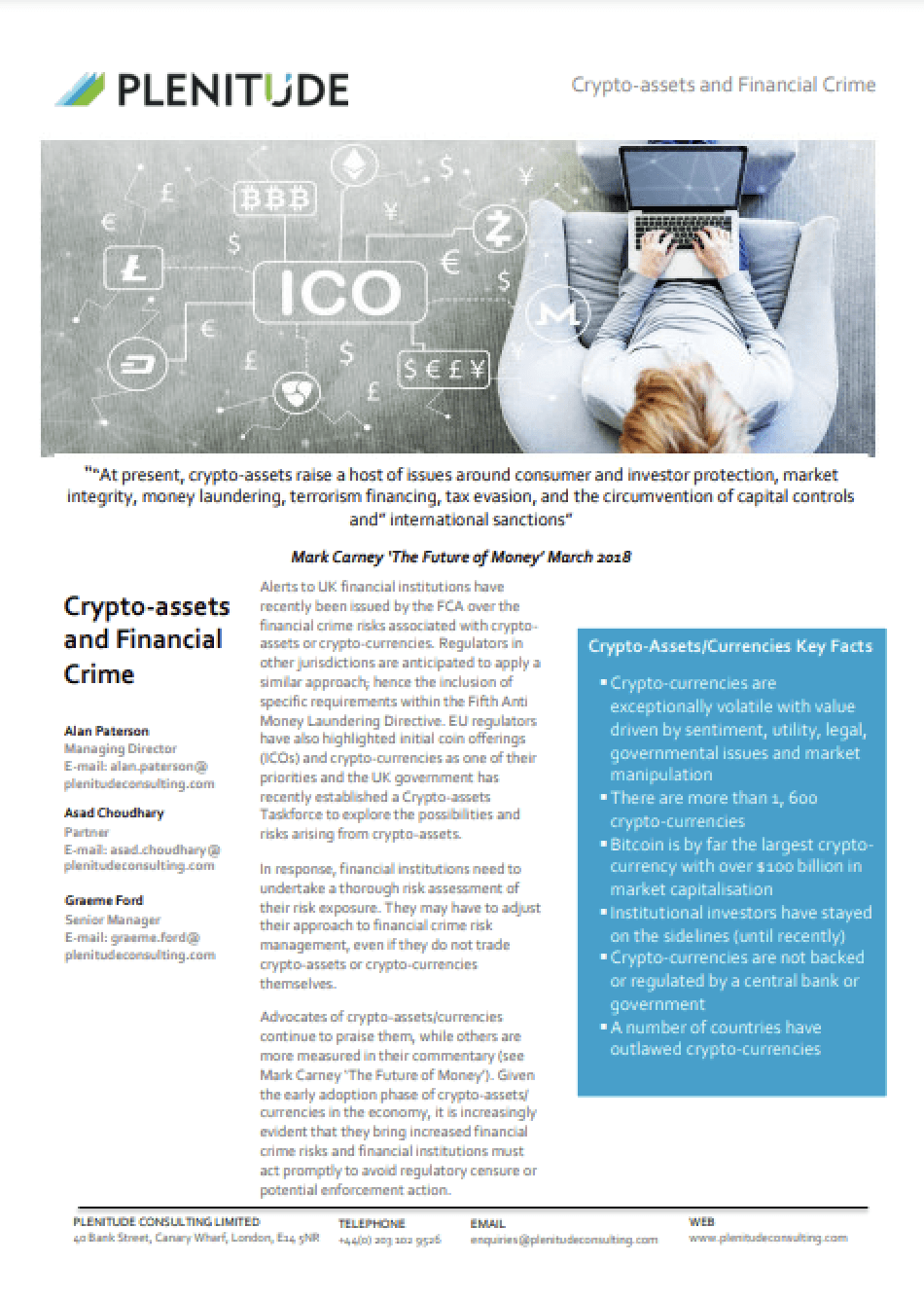In response, financial institutions need to undertake a thorough risk assessment of their risk exposure. They may have to adjust their approach to financial crime risk management, even if they do not trade crypto-assets or crypto-currencies themselves.
Advocates of crypto-assets/currencies continue to praise them, while others are more measured in their commentary. Given the early adoption phase of crypto-assets/currencies in the economy, it is increasingly evident that they bring increased financial crime risks and financial institutions must act promptly to avoid regulatory censure or potential enforcement action.
Conclusion
Among the enhancements required, financial institutions will likely need to update their client risk rating methodologies. One example is that economic activity using crypto-assets and cryptocurrencies is not often articulated in standard industry activity classifications (e.g. NACE, SIC) and you will need to improve your methodology to more clearly identify these.
As an improvement to your client due diligence procedures, depending on your risk exposure and client types, you may want to integrate with third party service providers that can trace the transaction history of your client in the crypto-currency’s publicly available distributed transaction ledger.
Finally, a financial institution should also examine its transaction monitoring capabilities, and ensure not only crypto-assets are integrated into the transaction monitoring solution, but that the same standards are maintained (e.g. for sanctions screening or beneficiary information).



 Asad Choudhary
Asad Choudhary
 Alan Paterson
Alan Paterson
 Graeme Ford
Graeme Ford
 Plenitude Insights
Plenitude Insights Digital Assets
Digital Assets Digital Assets/Crypto
Digital Assets/Crypto AML/CTF/CPF
AML/CTF/CPF



